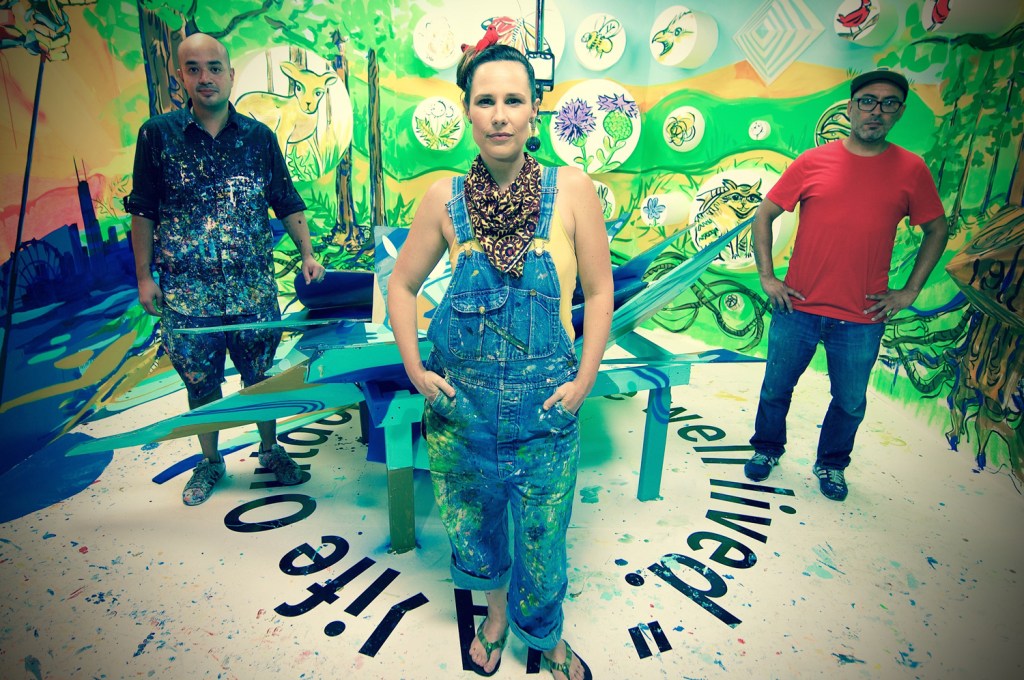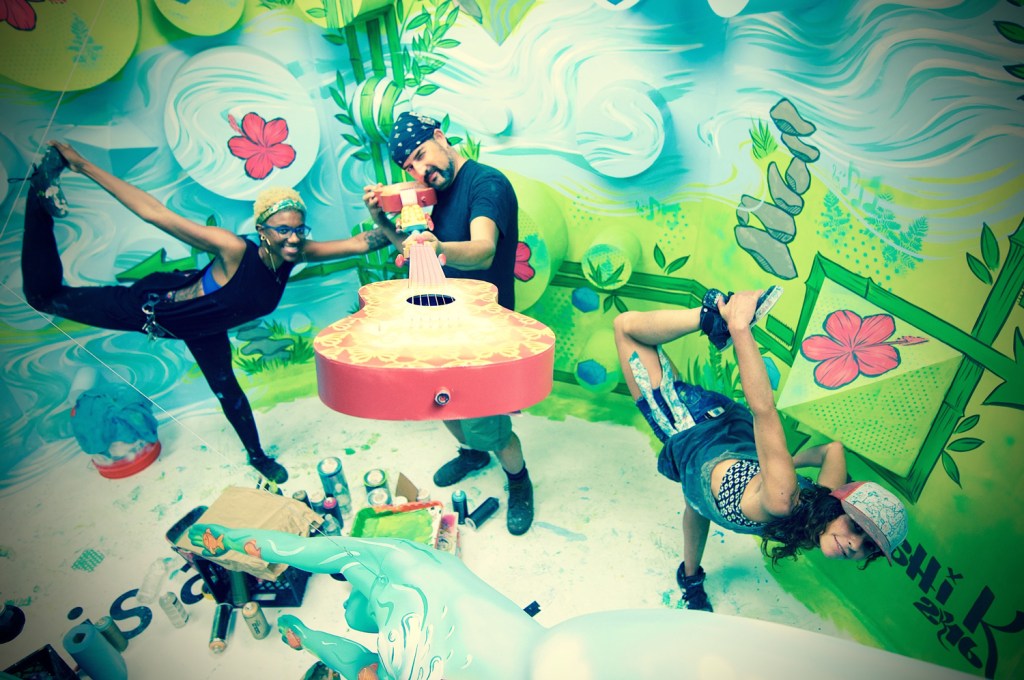This fall, REI zooms in more closely on its local communities by collaborating with local artists in three markets—Los Angeles, Austin and Chicago—to create installations that examine the intersection of art and nature.
The art installations were built within warehouse spaces where videographers were able to capture footage of the process. The artists had a few weeks to plan followed by one 24-hour period to execute their pieces. During the 24 hours, the artists collaborated to create a series of panels that form 360-degree installations depicting their personal connections with nature and their local surroundings.
The artistic process was documented in each market by a film crew, who captured footage to create two videos of each group of artists: first, short editorial videos introducing the artists and their respective cities; and, second, interactive 360-degree videos in which users can toggle around and watch as the installations grow into completed pieces. Check them out on REI’s YouTube channel.
Los Angeles, California

From left to right: Christina Angelina and Yoskay Yamamoto completed their piece in 17 hours.
“I believe Mother Nature is the original artist.” That’s Los Angeles artist Yoskay Yamamoto, who collaborated with local muralist Christina Angelina to create a dreamy, other-worldly depiction of Los Angeles’ limitless outdoor playground. “I enjoy a good hike and sunsets,” said Yamamoto, who hails from Japan. “This project inspired me to spend more time outdoors and experience nature more.”

Finished piece for Los Angeles: Replenishing SoCal.
Chicago, Illinois

From left to right: Esteban del Valle, Lauren Feece, and Ruben Aguirre Jr. completed their piece in 14 hours.
In Chicago, three artists came together to collaborate on an installation that’s two parts painting, one part sculpture. Lauren Feece, who at one point lived deep in the Puerto Rican jungle, painted a storybook depiction of a forest opposite Esteban del Valle’s superhero-like outdoor enthusiast. The paintings surround a fluid, three-dimensional representation of water by Ruben Aguirre Jr. “My work is an extension of graffiti, design and muralism,” said Aguirre Jr. about his everyday work as an artist. “I look at spaces and figure out how to respond to them in a way that contributes to the space, but also challenges it.” He continues, “I then use color, form, patterns and shapes to create a visual language that ultimately brings to life what might be an ordinary wall.” It’s obvious that Aguirre Jr., who used a color palette inspired by Chicago’s own Lake Michigan, employs the same concepts in this installation.

Finished piece for Chicago: Nurturing the Urban Jungle.
Austin, Texas

From left to right: Roshi, El Federico, and Niz completed their piece in 15 hours.
“It was hilarious and cozy,” says Austin-based artist Roshaun “Roshi” Krauthiem of painting alongside Federico “El Federico” Archuleta and Eleanor “Niz” Herasimchuk inside the installation itself for 15 hours straight. Roshi often pulls from what she calls “mystical worlds where strong goddesses, gentle plants and impossible shapes exist,” so her ability to incorporate circular protrusions in the canvas into her river depiction appears natural to the viewer. She also thought a lot about her local environment: “I was inspired by the hibiscus and bamboo that grow in Austin’s greenbelts. Both species were introduced to Austin, and like the constant influx of new residents, they set down roots and flourished.”

Artists pose with the completed Austin piece: Keeping Austin Weird.
REI’s art installations reflect artists with varied backgrounds, styles and experience with the outdoors. Some get outside every day; others are more studio-bound but often work in outdoor environments. The collaborations were celebrated in-store with artist meet & greets featuring local DJs and delicious food. REI members, local nonprofits and friends of the local art communities all showed up to show support for a new look at the outdoors.
“When companies like REI take responsibility for the preservation of our trails and waterways, it sets a good example for other companies and their customers to always keep what is important in mind: our world,” says Roshi of what inspired her to participate in this project. “If we don’t do our part to care about her, we obviously won’t have a home.”
